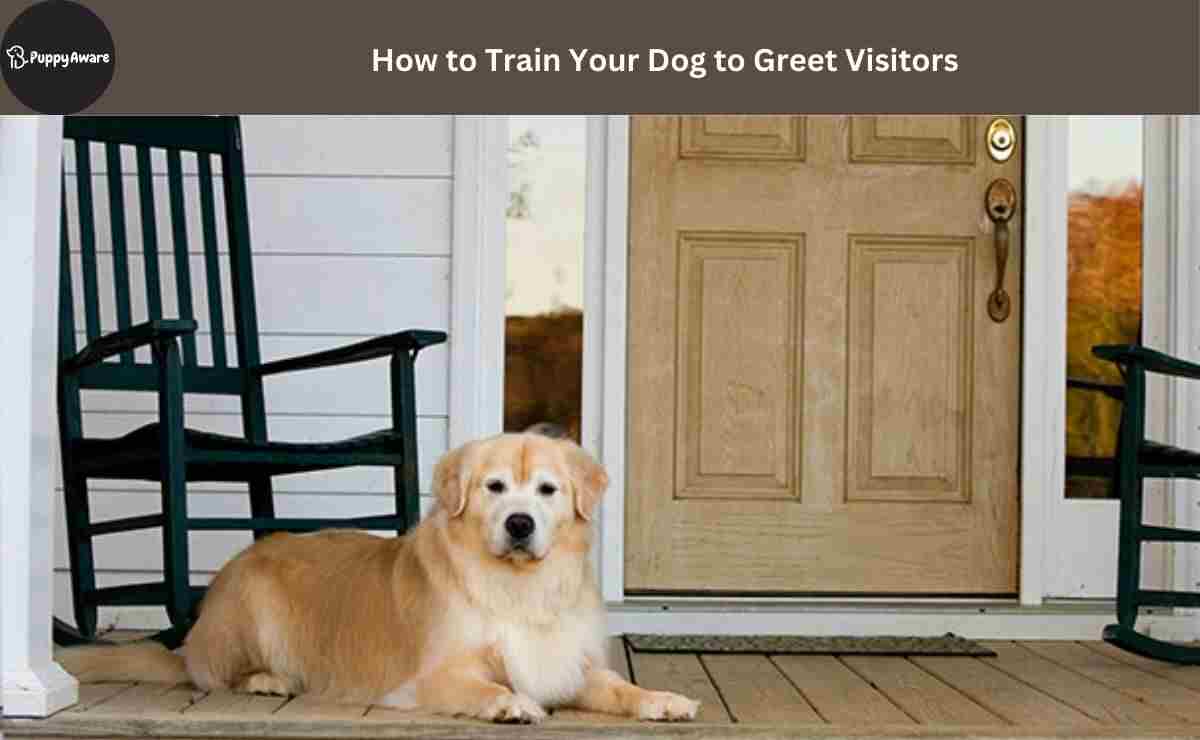Does your dog turn into a whirlwind of excitement when visitors arrive? Maybe they jump, bark, or even show signs of anxiety?
You’re not alone. Many dog owners struggle with managing their pets’ greeting behaviors, but with the right approach, you can transform chaotic welcomes into polite hellos.
Why Proper Greeting Matters
Proper greeting training isn’t just about good manners – it’s essential for everyone’s safety and comfort. An overexcited or poorly trained dog can:
- Frighten or injure visitors, especially children and elderly people
- Develop anxiety or aggressive tendencies
- Damage clothing or cause accidents
- Create stressful situations for both humans and pets
Understanding Your Dog’s Greeting Behavior
Before diving into training techniques, it’s crucial to understand why dogs react strongly to visitors. Dogs are social animals, and their greeting behaviors are deeply rooted in their pack mentality and natural instincts.
Here’s what’s really happening when someone comes to your door:
| Behavior Type | Natural Instinct | Modern Context |
|---|---|---|
| Jumping Up | Reaching for face to greet pack members | Seeking attention and connection |
| Excessive Barking | Alerting pack of potential threat/arrival | Announcing visitor presence |
| Spinning/Circling | Displaying excitement/submission | Shows overwhelming emotion |
| Sniffing Intensely | Gathering information about newcomer | Natural investigation process |
Setting Realistic Expectations
Training your dog to greet visitors appropriately requires:
- Consistency in approach
- Patience during the learning process
- Understanding of your dog’s personality
- Commitment from all household members
- Regular practice with different visitors
Most dogs can learn proper greeting etiquette within 4-8 weeks of consistent training, though some may need more time depending on age, previous habits, and temperament.
Essential Preparation for Greeting Training
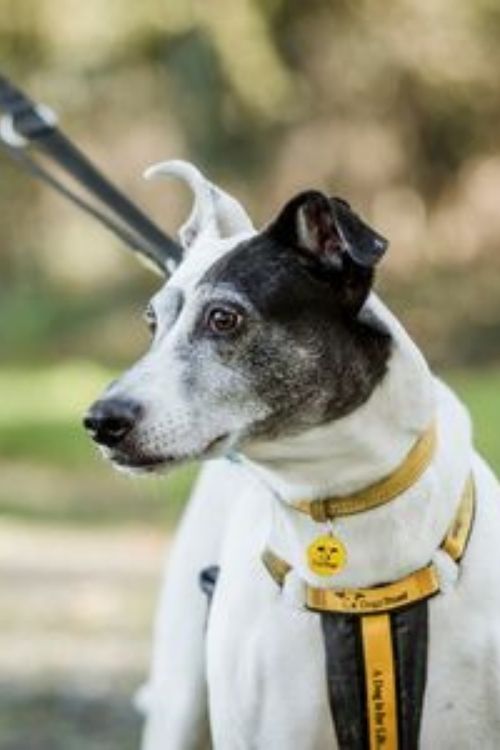
Before starting the training process, you need to set up your environment and gather necessary tools. This preparation phase is often overlooked but crucial for success.
Training Tools You’ll Need
| Tool | Purpose | Importance Level |
|---|---|---|
| High-Value Treats | Immediate reward system | Essential |
| Training Leash (4-6 ft) | Control and guidance | Essential |
| Door Mat or Designated Spot | Clear position marker | Recommended |
| Training Clicker | Precise behavior marking | Optional |
| Baby Gate/Barrier | Management during training | Recommended |
Creating a Training Zone
The entrance area needs to be properly set up for successful training. Here’s how to optimize your space:
Clear the Area
- Remove exciting toys and distractions
- Ensure enough space for movement
- Create a clear path to the designated greeting spot
- Consider temporary furniture rearrangement
Establish a “Landing Zone”
- Place a non-slip mat 6-8 feet from the door
- Make sure it’s visible to your dog
- Keep it consistent throughout training
- Consider using a different colored mat for clarity
Pre-Training Essentials
Before working with actual visitors, your dog should master these fundamental commands:
| Command | Success Criteria | Average Learning Time |
|---|---|---|
| Sit | Holds position for 30 seconds | 1-2 weeks |
| Stay | Maintains position with distractions | 2-3 weeks |
| Come | Responds reliably indoors | 2-3 weeks |
| Leave It | Ignores moderate distractions | 2-4 weeks |
Work on these commands in various locations around your home, not just in the training zone. This helps your dog generalize the behaviors.
Energy Management Strategies
An often-overlooked aspect of greeting training is managing your dog’s overall energy levels. Consider implementing these practices:
- Schedule regular exercise before expected visitors
- Use mental stimulation games to tire them out
- Practice relaxation exercises daily
- Maintain a consistent routine
- Consider natural calming aids if needed
How to Train Your Dog to Greet Visitors |Step-by-Step Training Process
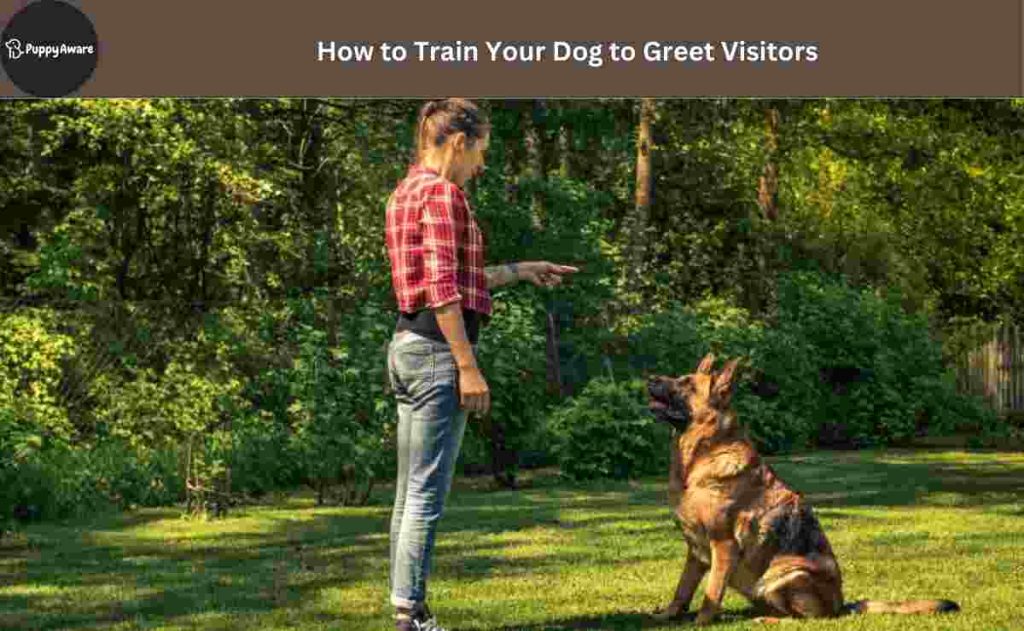
Phase 1: Basic Door Manners
The foundation of polite greetings starts with proper door behavior. Here’s your progressive training plan:
The Doorbell Desensitization Protocol
| Training Step | Duration | Success Indicators |
|---|---|---|
| Ring Bell/Knock → Treat | 5-10 mins, 2x daily | Reduced alerting |
| Doorbell → Look at You | 7-10 days | Consistent attention |
| Doorbell → Go to Spot | 10-14 days | Reliable positioning |
| Full Sequence Practice | 2-3 weeks | Calm response |
Record doorbell sounds on your phone for extra practice sessions without fatigue.
Phase 2: The “Go to Your Spot” Training
This critical phase teaches your dog where to be when visitors arrive:
Initial Spot Training
- Mark spot with comfortable mat
- Use clear command (e.g., “Place” or “Spot”)
- Reward increasingly longer stays
- Practice with varying distances
Adding Movement
- Walk around while dog stays
- Approach door while dog maintains position
- Practice opening/closing door
- Reward calm behavior extensively
Phase 3: Greeting Protocol Development
Now we’ll establish the actual greeting routine:
| Stage | Training Focus | Duration | Key Points |
|---|---|---|---|
| 1 | Calm Position | 1-2 weeks | No jumping allowed |
| 2 | Release Command | 1 week | Clear signal to greet |
| 3 | Controlled Greeting | 2-3 weeks | Gentle interaction |
| 4 | Multiple Visitors | 2-4 weeks | Group management |
Common Challenges and Solutions
Most dogs face specific hurdles during this phase:
Jumping Up
- Turn away immediately
- Remove all attention
- Reward four-on-floor position
- Practice with various helpers
Excessive Barking
- Teach “Quiet” command
- Reward silent moments
- Use positive interruption
- Maintain distance control
Advanced Training & Special Scenarios
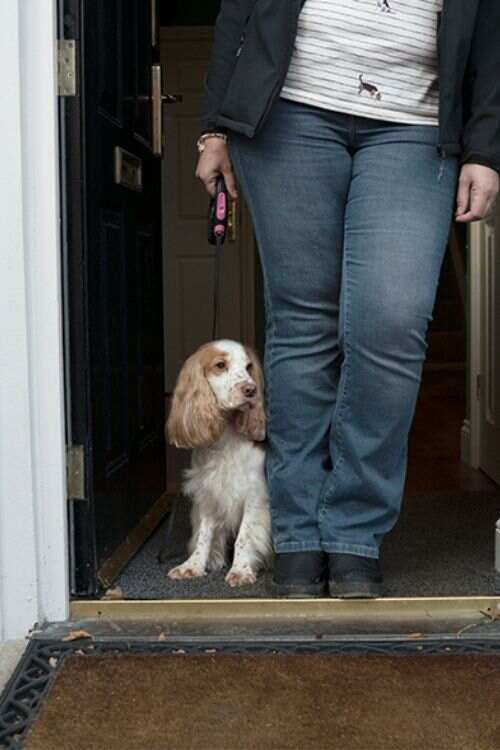
Working with Different Types of Visitors
Not all visitors are the same, and your dog needs to learn appropriate greetings for various situations:
| Visitor Type | Special Considerations | Training Modifications |
|---|---|---|
| Delivery Personnel | Brief encounters | Quick acknowledgment only |
| Children | Lower height, unpredictable movements | Extra control, gentle approach |
| Elderly Visitors | Stability concerns, slower movements | Calmer greetings, more distance |
| Other Dog Owners | Potential pet interactions | Dual-pet protocols |
| Service Workers | Extended home presence | Long-term settling behavior |
Special Situations Management
Multiple Dog Households
Training multiple dogs requires additional strategies:
Individual Training
- Work with each dog separately
- Establish individual spots
- Practice rotating greetings
- Use separate rewards systems
Group Dynamics
- Assign hierarchy for greetings
- Prevent competition
- Manage space effectively
- Consider temperament matches
Environmental Challenges
| Challenge | Solution Strategy | Implementation Time |
|---|---|---|
| Small Entryways | Create distance markers | 1-2 weeks |
| Multiple Entrances | Consistent protocol at all doors | 2-3 weeks |
| Open Floor Plans | Use portable barriers | 1 week setup |
| High-Traffic Areas | Schedule training during quiet times | Ongoing |
Professional Integration
When to consider professional help:
- Persistent jumping despite training
- Signs of fear or aggression
- Complex multi-dog situations
- Visitor-specific reactions
- Plateau in progress
Keep a training journal to track progress and identify patterns in your dog’s behavior. This data helps adjust training methods effectively.
Maintaining Success & Long-Term Management
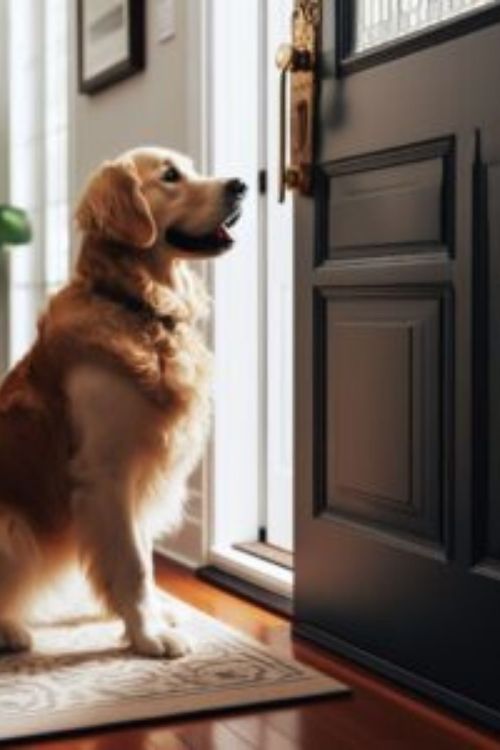
Reinforcement Schedule
To maintain proper greeting behaviors long-term, follow this reinforcement timeline:
| Training Stage | Reward Frequency | Type of Reinforcement |
|---|---|---|
| First Month | Every success | High-value treats |
| Months 2-3 | 75% of successes | Mixed rewards |
| Months 4-6 | 50% of successes | Occasional treats |
| Maintenance | 25% of successes | Life rewards/praise |
Common Regression Triggers
Understanding what can cause setbacks helps prevent them:
Schedule Changes
- New work hours
- Family routine disruptions
- Holiday periods
- Seasonal changes
Environmental Factors
- Moving homes
- New neighborhood
- Home renovations
- Weather changes affecting exercise
Problem-Solving Guide
| Issue | Possible Cause | Solution Strategy |
|---|---|---|
| Sudden Jumping | Over-excitement | Return to basic training |
| Inconsistent Response | Unclear expectations | Standardize family approach |
| Fear Reactions | Negative experience | Counter-conditioning |
| Selective Listening | Insufficient practice | Increase training frequency |
Tips for Long-Term Success
Regular Practice Sessions
- Schedule monthly refresher training
- Vary practice scenarios
- Keep training tools accessible
- Maintain consistent rules
Family Involvement
- Hold family training meetings
- Share progress updates
- Assign specific roles
- Celebrate improvements together
When to Adjust Your Approach
Signs that your training plan needs modification:
- Plateauing progress
- New behavioral issues
- Changes in household dynamics
- Seasonal behavior changes
Conclusion
Remember that polite greetings are an ongoing journey, not a destination. Success comes from:
- Consistent practice
- Clear communication
- Patience with progress
- Understanding your dog’s unique needs
- Regular adjustment of techniques
Your commitment to training will result in a happier, more confident dog and more enjoyable visits for everyone involved.
Related Posts
